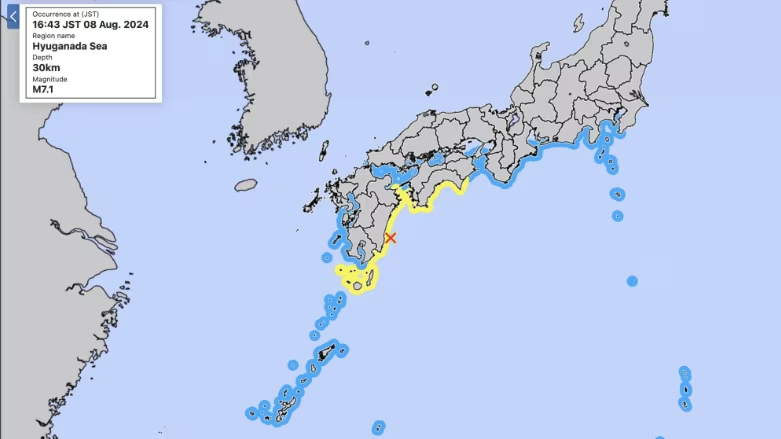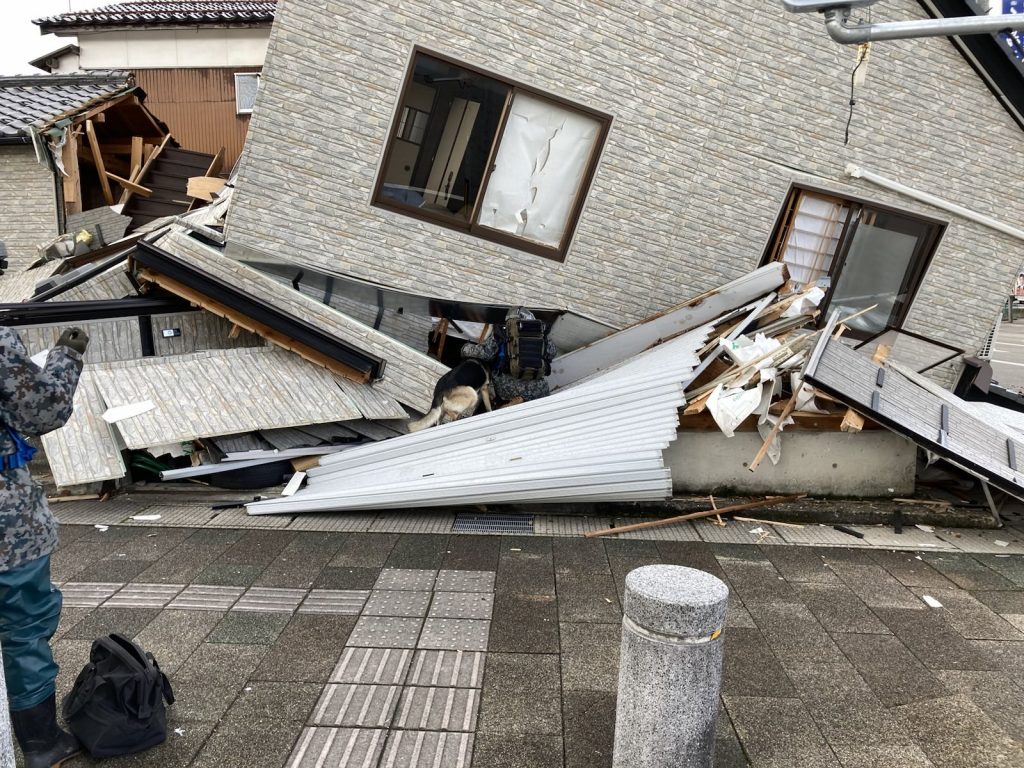
On August 8, 2024, Japan experienced a significant seismic event when a magnitude 7.1 earthquake struck off the southern coast of Kyushu, the country’s third-largest island. This earthquake, which occurred around 4:42 PM local time, was centered in the Nankai Trough—a tectonic boundary known for its history of producing large, destructive earthquakes. The tremor caused buildings to sway, disrupted transportation, and led to a temporary tsunami advisory for the region, putting residents on high alert.
The Japan Meteorological Agency (JMA) quickly issued its first-ever “megaquake” advisory under a relatively new alert system introduced in 2019. This system, designed to provide early warnings for potential large-scale earthquakes, covers 29 prefectures along Japan’s Pacific coast. The advisory stretches from Okinawa in the southwest to Ibaraki Prefecture, just north of Tokyo. Although the advisory did not call for immediate evacuations, it urged residents to prepare for the possibility of a major earthquake and tsunami, which could occur in the coming days or weeks.

The decision to issue such a warning was not taken lightly. The Nankai Trough, where the earthquake occurred, is a subduction zone where the Philippine Sea Plate is being forced under the Eurasian Plate. This geological setup has historically generated some of Japan’s most powerful earthquakes, including the catastrophic 1707 Hoei earthquake and the 2011 Tohoku earthquake. The latter, with a magnitude of 9.0, triggered a massive tsunami that devastated northeastern Japan and led to the Fukushima Daiichi nuclear disaster.
The recent 7.1 earthquake, while not as destructive as past events, has nevertheless heightened concerns about the potential for a much larger seismic event. According to the JMA, the probability of a magnitude 8.0 or larger earthquake occurring in the Nankai Trough within the next week is now higher than usual. This is based on historical data showing that large earthquakes often follow one another in quick succession in this region. For example, in the past century, several magnitude 7.0 earthquakes have been precursors to even larger quakes in the same area.
In response to the increased seismic risk, Prime Minister Fumio Kishida canceled a planned trip to Central Asia, opting to stay in Japan to oversee the government’s disaster preparedness efforts. The Prime Minister’s decision reflects the seriousness with which the Japanese government is treating the situation. The government has urged residents in the affected areas to review their emergency plans, ensure that they have sufficient supplies, and stay informed through official channels.

The JMA has also been closely monitoring the situation and has warned that if a major earthquake were to occur, it could generate strong shaking across a wide area of Japan, potentially causing a large tsunami along the Pacific coast. The agency’s experts have pointed out that while the likelihood of such an event has increased, it is impossible to predict exactly when or where the next major earthquake will strike. However, the advisory serves as a critical reminder for residents to remain vigilant and prepared.
The impact of the earthquake on the local population has been relatively limited so far. Small tsunami waves, measuring less than two feet, were observed along the coast, but they did not cause significant damage. Nevertheless, the psychological impact on residents is profound, as many people vividly remember the devastation of the 2011 earthquake and tsunami. Schools, businesses, and local governments have since been conducting emergency drills, and there has been a noticeable uptick in the purchase of emergency supplies.
Japan’s unique position on the Pacific “Ring of Fire” means that it is one of the most earthquake-prone countries in the world. The nation experiences about 1,500 earthquakes each year, most of which are too small to cause damage. However, the potential for large, destructive earthquakes is ever-present, and the country has invested heavily in early warning systems, earthquake-resistant infrastructure, and public education to mitigate the risks.

In summary, the recent magnitude 7.1 earthquake off the coast of Kyushu has once again put Japan on edge, reminding the nation of its vulnerability to seismic disasters. While the immediate tsunami threat has passed, the possibility of a larger earthquake looms, prompting both the government and the public to remain on high alert. The JMA’s unprecedented “megaquake” advisory underscores the importance of preparedness in a country where the next major earthquake could be just around the corner.














